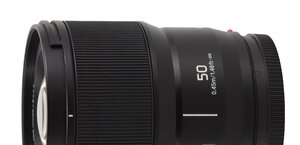Tamron 35-150 mm f/2.8-4 Di VC OSD
5. Chromatic and spherical aberration
Chromatic aberration
Photos below show that the Tamron 35-150 mm f/2.8-4 Di VC OSD doesn't have any problems with the longitudinal chromatic aberration. Even in blurry areas positioned far away in the frame you can hardly perceive any colouring of images. |
 |
Please Support UsIf you enjoy our reviews and articles, and you want us to continue our work please, support our website by donating through PayPal. The funds are going to be used for paying our editorial team, renting servers, and equipping our testing studio; only that way we will be able to continue providing you interesting content for free. |
- - - - - - - - - - - - - - - - - - - - - - - - - - - - - - - - - - - - - - - - - - - - - - - -


The aberration is completely imperceptible in the middle of the focal range where its level doesn't exceed 0.04%. We also don't have any reservations concerning the performance at the longer part of the focal range, where it keeps a level of 0.04-0.05% no matter what aperture you employ. The biggest chances to perceive lateral chromatic aberration you get at the shortest focal length. In its case, at the maximum relative aperture, the results reach medium values but they drop to low levels on slight stopping down.
| Canon 5D III, RAW, 35 mm, f/2.8 | Canon 5D III, RAW, 90 mm, f/11.0 |

|

|
Spherical aberration
When it comes to focus shift effect it seems in both photos, so at 100 and 150 mm, you can notice a slight shift toward greater distances. It makes us think spherical aberration isn't corrected in a perfect way. The appearance of defocused circles of light before and after the focus seems to confirm that impression. Once again in every case you can see noticeable differences in intensity of the rim of the circle and its brightness in the centre.
| Canon 5D III, 90 mm, f/3.5, in front of | Canon 5D III, 90 mm, f/3.5, behind |

|

|
| Canon 5D III, 150 mm, f/4.0, in front of | Canon 5D III, 150 mm, f/4.0, behind |

|

|






